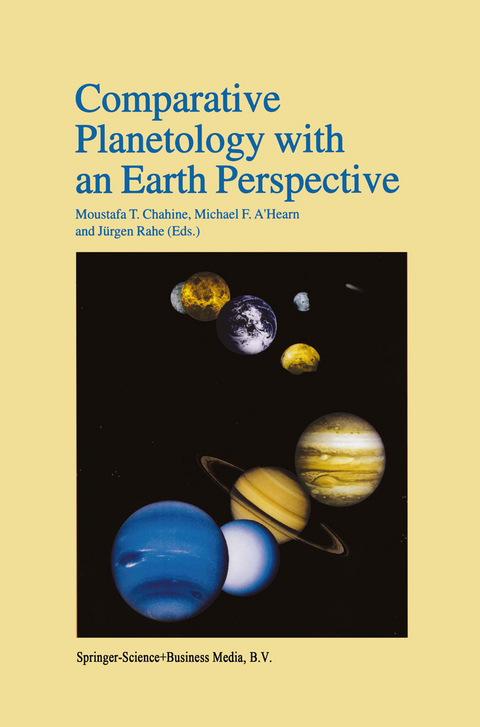
Comparative Planetology with an Earth Perspective
Springer (Verlag)
978-0-7923-3790-4 (ISBN)
Formation of the Terrestrial Planets.- Geology of Terrestrial Planets with Dynamic Atmospheres.- CO2 Cooling in Terrestrial Planet Thermospheres.- Constraints on the Martian Cratering Rate Based on the SNC Meteorites and Implications for Mars Climatic History.- Factors Controlling Volcanism and Tectonism in Solar System Solid Bodies.- Giant Planet Formation: A Comparative View of Gas-Accretion.- Giant Planet Formation: Dynamical Stability of a Massive Envelope.- Origin of the Major Planet Atmospheres: Clues from Trace Species.- The Chemical Atmospheric Composition of the Giant Planets.- NH3, H2S, and the Radio Brightness Temperature Spectra of the Giant Planets.- Titan’s Atmosphere and Surface: Parallels and Differences with the Primitive Earth.- Cryovolcanism on the Icy Satellites.- Formation of Satellite and Ring Systems: Comparative Aspects.- Frozen Fields.- Planetary Dynamos.- Planetary Magnetospheres.- Boundary Determinations from Low Frequency Magnetic Field Measurements.- Evolution of Planetary Ringmoon Systems.- Thermal History of Planetary Materials in the Solar Nebula.- Migration of Bodies in the Accumulation of Planets.- List of Participants.- The ‘Kluwer’ LaTeX Style File: Instructions for Authors.- Author Index.- Volume Contents.
| Erscheint lt. Verlag | 30.11.1995 |
|---|---|
| Zusatzinfo | X, 230 p. |
| Verlagsort | Dordrecht |
| Sprache | englisch |
| Maße | 155 x 235 mm |
| Themenwelt | Naturwissenschaften ► Physik / Astronomie ► Astronomie / Astrophysik |
| ISBN-10 | 0-7923-3790-5 / 0792337905 |
| ISBN-13 | 978-0-7923-3790-4 / 9780792337904 |
| Zustand | Neuware |
| Haben Sie eine Frage zum Produkt? |
aus dem Bereich


